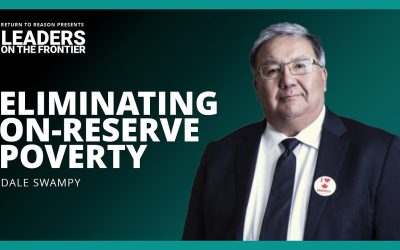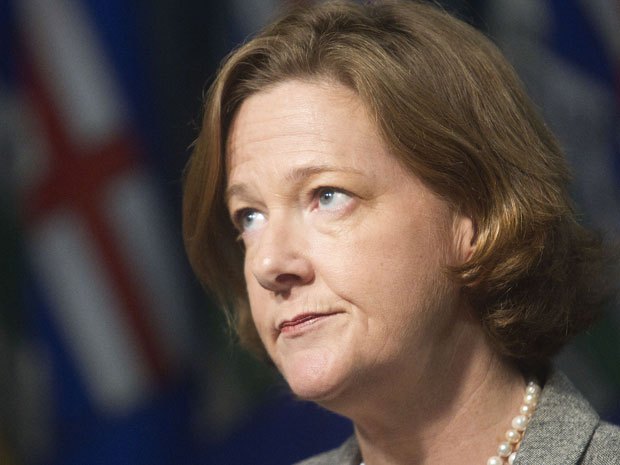National Coalition of Chiefs President, Dale Swampy, is committed to defeating on-reserve poverty, and today he expresses his views with David Leis. Outspokenly pro-development, Dale reveals why he believes that getting involved with the oil and gas industry in Canada...
Poverty
Poilievre’s Complicated Tax Issue Made Simple
The new Conservative leader Pierre Poilievre is correct when he says governments discourage work by taxes and clawbacks. The Marginal Effective Tax Rate (METR) measures what government takes from each new dollar earned in taxes and in clawbacks of income-related...
The Failed Economics of Carbon Taxes
A leading Canadian economist says the case for carbon taxes is limited and its proponents deliver more rhetoric than reality. In an interview with this author, Steve Ambler, Economics Professor at the University of Quebec at Montreal gave an excellent economic...
Economic liberalization cuts poverty
A new video shows that poverty reduction targets in the developing world have already been met. The reduction has come from some of the most populous countries- namely China and India- reducing poverty levels through economic liberalization. The video also states...
Featured News
There’s Nothing Fair About Canadian Health Care
For the past 14 years, Vancouver surgeon Dr. Brian Day has led the charge for health-care reform, pushing for the right of patients to pay for private care if their health and well-being are threatened as a result of waiting in a stagnant and overburdened public...
Transformers: More than Meets the Eye
The path to net zero, based on the much disputed belief that carbon dioxide is a pollution, is more steep and impractical than most people realize. Replacing fossil fuels with clean electricity will require much more power generation and a greatly upgraded grid to...
Aboriginal Day means time for new ideas
As Aboriginal Day comes tomorrow, is time to re-think our current policy approaches and think about a new direction.
Some Perspective on Mass Produced Food and Global Poverty
White bread has developed a bad name in most developed countries. It is bland, and unhealthy relative to whole wheat bread. Many Canadians with sufficient disposable income now spend an extra few dollars to buy all kinds of artisanal breads, rather than pre-made bread...
Media Release – Cities Should Fight Poverty, Not Increase It: How do we get more prosperous cities?
Today the Frontier Centre released the backgrounder Toward More Prosperous Cities by Wendell Cox. The objective of public policy should be to achieve wide-spread affluence and eradicate poverty. Cities, urban policy, and urban transport are means to facilitate this objective, not ends themselves.
Political instability problem for native communities both side of border
Political instability is a major impediment to business and investment on First Nations reserves in Canada. It is a problem right up there with land ownership restrictions and lack of access to capital. This is also a problem identified on Native American reservations...
A Rejoinder to a Recent CCPA Article on Minimum Wages
President Obama’s pledge to increase the national minimum wage has spurred a vigorous debate over how to improve the living standards of low skilled workers. Economists are skeptical of minimum wage increases, pointing out that they increase unemployment. They tend to advocate an earned income tax credit (EITC) as an alternative.
The Minority Youth Unemployment Act: A higher minimum wage will hurt Obama’s most loyal supporters.
One paradox of the Obama Presidency is how it has retained the support of young people and minorities despite the damage its policies have done to their economic prospects. In his latest attempt to increase the minority youth jobless rate, President Obama is proposing to raise the minimum wage.
The “bubble” is not in bitumen
I once heard a wise man say that governments are always wrong when making economic predictions. The questions to consider are by how much, and in what direction?
That the Government of Alberta was wrong in its economic predictions should therefore not be big news. But they were wrong by lots and widely in the wrong direction. Alberta was predicting averages around $99 a barrel for the past year. But it was not that prediction that got them in trouble, now facing a likely deficit near the $6 billion mark.
It appears to be the failure to account for the rising price differential –the difference between market prices and the bargain basement price Alberta needs to sell its oil to the United States because of our lack of pipeline capacity to deliver to markets. It’s what the premier called a “bitumen bubble.” The price differential is not new, and for more than a year, economists were predicting a larger gap unless greater capacity to carry oil to market were developed.
The core of the problem lies elsewhere, whatever the premier says: Two successive Alberta governments for close to a decade have now been unable to balance their budgets at times when oil revenue was riding high. When money abounds and one still runs out of it, it is a clear indication that the problem is not revenue. The problem is spending.
Jack Mintz from the School of Public Policy and other keen observers had predicted that we would be at this precise junction around this time. Keep spending more than you have while you bridge gap with a supply of money the flow of which you cannot control, and it is not difficult to see that when the gap-closing supply goes down so does your ability to keep spending in the same undisciplined way.
And down that hole we now go, raising the spectre of budget cuts and higher taxes. Not quite a cliff, as a friend of mine joked, but surely a Buffalo jump. Yet, the government is still not facing reality for all the reality facing it.
In her televised address last week, the premier keeps promising not to raise taxes, and not to reduce the budget lines of the two largest spending departments, healthcare and education, to deal with the $6 billion gap. Fair enough, but the promise to start putting savings into the Heritage Fund quickly gave her talk a hue of unreality.
Change the Culture of Rape
The recent protests in India are very different from those of a generation ago, in the 1960s-70s, when protesters, mostly from the slums, shouted ‘Roti, Kapra and Makan’, which means “Bread, clothes and housing”. Today, India is an economic giant embracing...
Can Goldman Sachs help the homeless?
A few blocks from where I work, there’s a guy who lives on a sidewalk in the Financial District. That guy is incredibly expensive. For the amount we pay in social services to keep him alive, he could practically move into the Ritz. The yearly cost of caring for a homeless person with substance abuse and mental issues (that is, most of them) ranges from $55,000 up to $134,000, according to various research studies.



